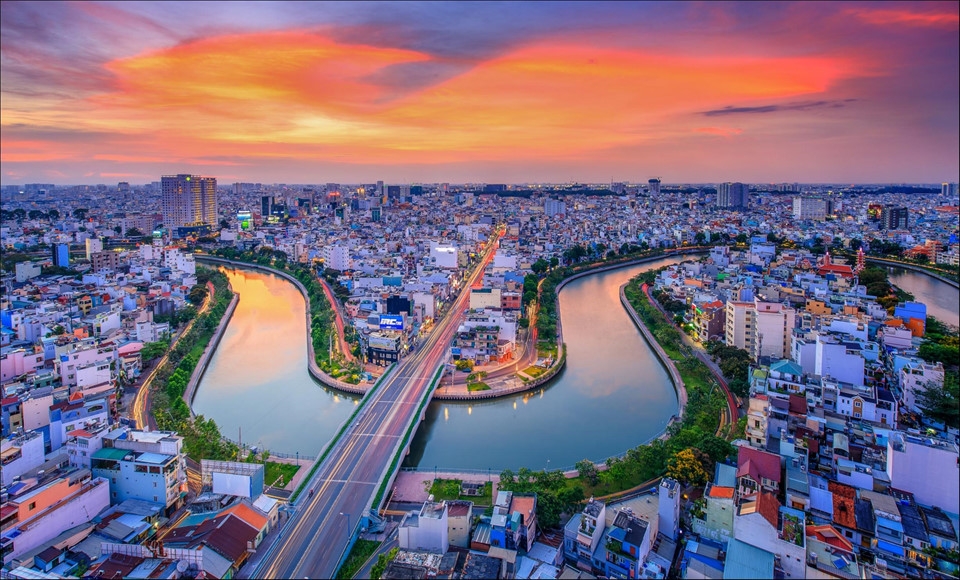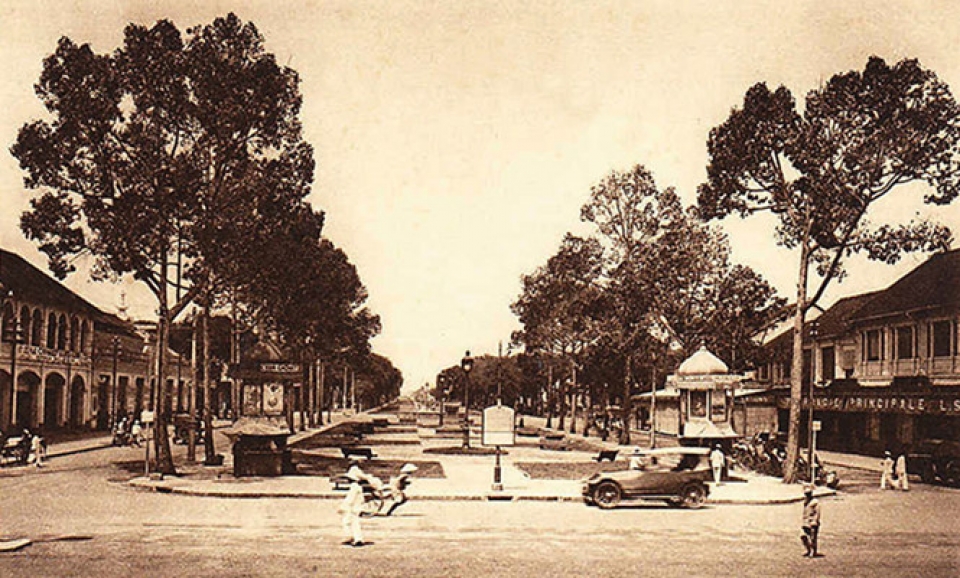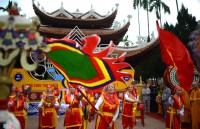
From Sai Gon to Ho Chi Minh City
Latest
| TIN LIÊN QUAN | |
| Tet and the Vietnamese cultural identity | |
| Here comes Tết, the Lunar New Year | |
No doubt, Sai Gon cannot pride itself on its rather recent history. This does not mean that it is an ordinary city, without personality, without cultural attraction. Focus of a vast region of acculturation of Khmer, Chinese, Viet and other cultures, centre of western penetration, site of numerous wars, international commercial port, political, economic and cultural capital of the fertile and prosperous South, Sai Gon crystallised its own traditions and an original humanism which often goes unnoticed by the tourist who let himself be drawn in by its maelstrom.
 |
| Ho Chi Minh city at dawn. (Photo: zing.vn) |
In 939 the Vietnamese people succeeded in putting an end to the 1000-year-old Chinese domination and established their capital in Thang Long (Ha Noi) in 1010. To link the Song Hong (Red River) Delta, cradle of the national, to the Mekong River Delta, it took the Vietnamese six hundred years to undertake a march south.
It is interesting, on the occasion of the third centenary of Sai Gon, to trace back its mutations through some impressions of foreign tourists.
In 1861, two years after the French conquest:
The traveler who arrives in Sai Gon would see on the right bank of the river a sort of street where the houses are interrupted by big blank spaces. Most of the houses are made of wood and covered with dwarf palm leaves. Others, smaller in number, are made of stone. Then, it is the curved-up roof of a pagoda, the water surface of the Chinese canal and two smaller canals shortened by the perspective, a wobbly hangar which serves as a smaller marketplace. On the second plane, groves of niva palm harmonise well with the sky of India. Thousands of boats press against the river bank and form a floating town
Leopold Pallu
In the 20th century:
 |
| The old Bonard Boulevard of Sai Gon. |
Ah, what a nice town, Sai Gon! One likes it nobody knows why, probably for its space, maybe for its somnolence, or because of its mass of verdure where white and square houses look like small buried Greek temples.
Myriam Harry
Sai Gon was once proclaimed the Pearl of the Far East and all those who have had the good luck to live in or just to visit it agree that it deserves, without reservation, this gracious appellation.
And first of all, honour to whom honour is due. Just like Marseille has its Cannebière which makes of it a grand Paris, Sai Gon possesses its Rue Catinat of which is rightly proud. It is, in fact, unique of its kind.
Georges Durwell, My dear Cochinchina, 1910
Ho Chi Minh City by the end of the century
It is likely that Sai Gon, like Shanghai, got its nickname “Paris of the Orient” because of its atmosphere, not its environment. Site of a million dramas, large and small, Ho Chi Minh City is a fast-moving, energetic place, a magnet for the ambitious. It has all the political intrigues, excitement, and romance of southern cities worldwide - broad boulevards, warm weather, and palm trees. It has a “worldly” population, all the latest fashionable entertainment. Its politics are incomprehensible but the make a good read; and for every five Vietnamese Northerners who look down their noses at the city’s population, four will move to Sai Gon anyway. It is full of showy millionaires, socialist cadres, beggars, philanthropists, artists, and actresses. Every other person you meet will tell you, “I am going to start a business.”
Edith Shillue
Earth and Water, University of Massachusetts Press, 1997
2 August 1998
 | A visit to Three-Basin Lake - Hồ Ba Bể In the midst of a vast expanse of emerald water a small island emerges, made up of big blocks of limestone which look as if ... |
 | A toast to Vietnamese rice wine It is traditional in Viet Nam that women do not drink alcohol as it is considered to be a man’s domain. One Sino-Vietnamese proverb claims: ... |
 | The month of festivities An old Vietnamese folk song reads: "The first month is given to Tết at home, the second to gambling, the third to festivities, etc." (The ... |

















